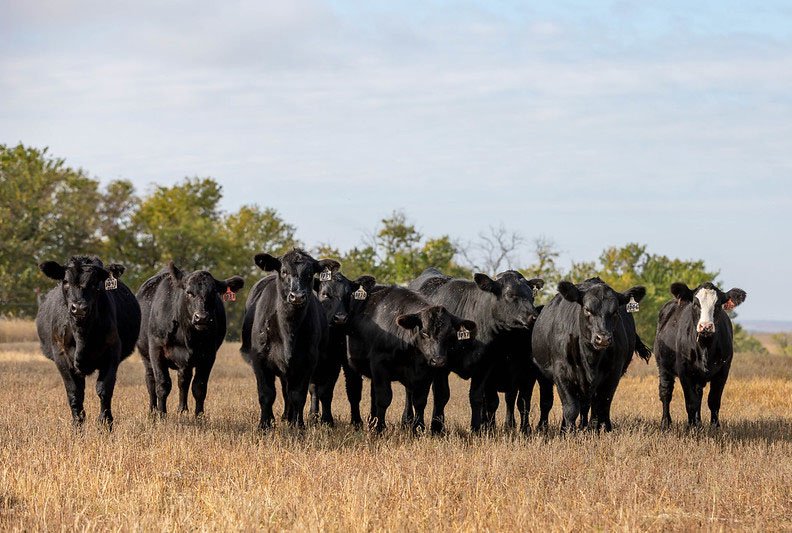MANHATTAN — To help reduce waste and stretch the food dollar, many people look for ways to use items in the refrigerator before they spoil.
Beef producers with old hay stored on their operation often look for appropriate ways to incorporate that into the forage feeding strategy. This was the topic that Kansas State University Beef Cattle Institute experts addressed on a recent Cattle Chat podcast.
In this case, a listener runs spring and fall-calving cows in the same pasture and is trying to determine how to best meet the varied nutritional requirements with hay that is 2-3 years old.
“Depending on the type of hay, when it was cut, and how it was stored, there could be a lot of variability in the quality of that forage,” K-State nutritionist Phillip Lancaster said.
To help determine the quality of the hay, K-State veterinarian Bob Larson recommended producers keep track of the harvest date.
“If we know the harvest date and are familiar with the maturity pattern in the area, we will have a pretty good idea about the nutrient quality of that hay,” Larson said.
Lancaster said the highest quality hay needs to be fed to lactating cows that have high maintenance energy requirements. He said producers can use older hay, but they will likely need to offer a vitamin and mineral supplement as well. “In 2-3-year-old hay that is stored outside, the beta carotene in those bales deteriorate rapidly, so it is important to offer them a vitamin A supplement,” Lancaster said, adding that the minerals need to be fresh.
In some herds, producers can separate the fall and spring calving cow herds, allowing them to offer the older hay to cows with lower maintenance requirements, such as cows in mid-gestation. But in this case, the cows are maintained together and that leads to a different strategy, the experts said.
“With the fall-calving cows just coming out of the breeding season and the spring-calving cows in their last trimester, I recommend primarily offering them hay cut this year, but every once in a while, you could throw them a bale of the older hay to try to use it up and that should allow them to keep from getting too thin,” Lancaster said.
To hear the full discussion, listen to Cattle Chat at https://ksubci.org/2025/01/31/research-update-garden-city-partnership-feeding-program/ on your preferred streaming platform.





